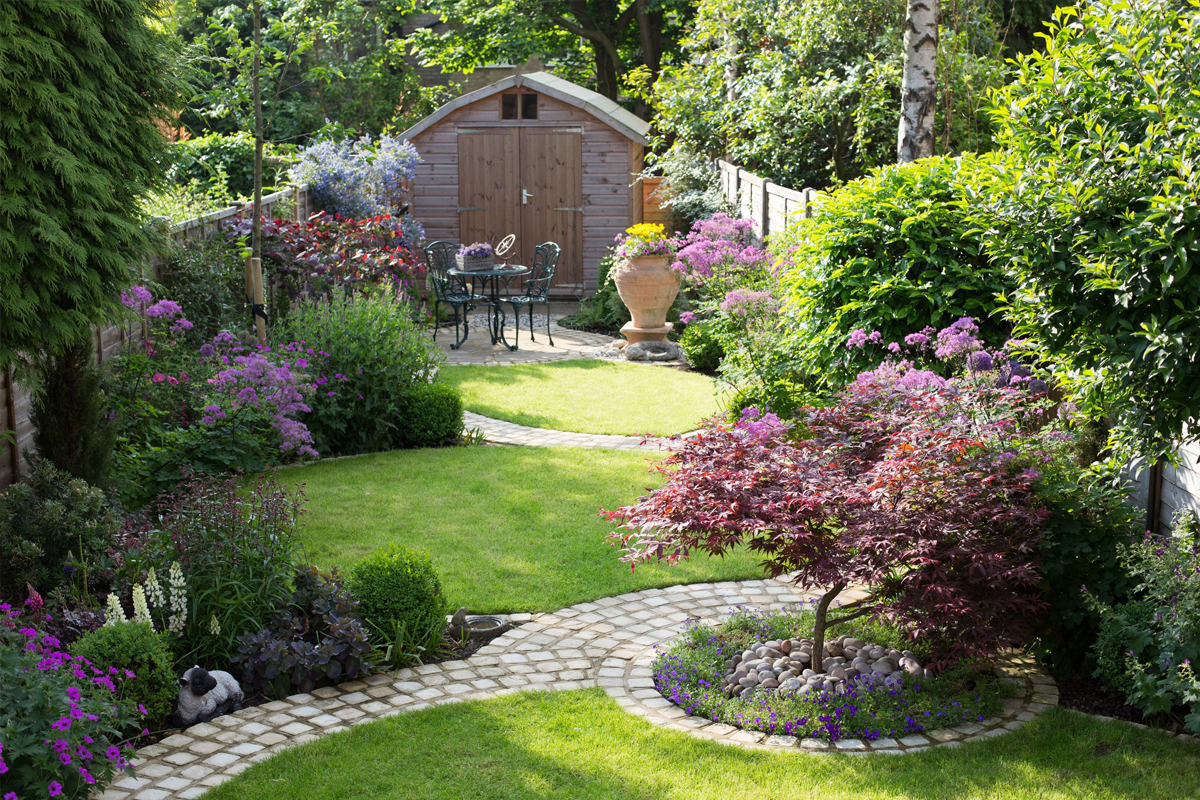Creating a beautiful garden by yourself is an exciting process that requires planning, creativity, and a little patience. In landscape design, it’s essential to consider the plot size, climatic conditions, sunlight, and style. Here are the basic steps that will help you plan and realize a garden design for your space.
Plot Planning: Zoning and Style Selection
The first step in creating a beautiful garden is careful planning and zoning of the area.
Plot Layout
Decide which zones you want in your garden: perhaps a relaxation area, a spot for vegetable beds, flower beds, or a small pond. Drawing a layout of the plot is helpful to understand where the sunny and shaded areas are located. This will assist in choosing the right plants and achieving a balance between functionality and aesthetics.
Garden Style
Choosing a style is an important aspect of planning. For instance, natural materials, stones, and flowering shrubs are ideal for a country garden. If you prefer a more structured and modern design, opt for a minimalist style with neat lawns, simple shapes, and clean lines. For an eastern garden, water features, decorative stones, and bamboo are suitable, while symmetry, perennial flower beds, and decorative statues characterize a classic garden.
Plant Selection and Greenery: Flower Beds, Trees, and Shrubs
Plants play a central role in garden creation, and their selection should consider the climate and light conditions of the area.
Green Plantings
Start with basic green plantings like trees and shrubs, which create structure and volume. Evergreen trees add color in winter, while flowering shrubs like lilacs or forsythia bring vibrant hues in spring. Trees can also provide natural shade on hot days.
Flowers for All Seasons
Flower beds make the garden cozy and appealing. Choose flowers that bloom at different times of the year so that the garden remains attractive year-round. Daffodils, tulips, and crocuses are perfect for spring, while peonies, daisies, and lavender are great for summer, and chrysanthemums and asters for autumn. Create mixed flower beds with plants of different heights and textures to add depth to the composition and make the garden more interesting.
Perennial Plants
If you want a low-maintenance garden, choose perennial plants and ornamental grasses. They retain their beauty throughout the year and require little care. Ornamental grasses like miscanthus or fescue create a light, airy atmosphere and bring movement to the landscape.
Decorative Elements: Paths, Lighting, and Water Features
Decorative elements give the garden personality and make it enjoyable for strolling.
Garden Paths
Paths are a component of landscape design that guide movement and give the garden a complete look. The materials for paths depend on the garden style: stone, gravel, wooden slices, or tiles. In a natural garden, paths made of natural stone work well, while in a modern minimalist garden, simple tiles or gravel paths are suitable.
Garden Lighting
Lighting adds coziness and allows you to enjoy the garden in the evening. Soft light along paths, illumination of trees and shrubs, and small lights in the relaxation area create a warm atmosphere. Use solar lamps to save electricity or install long-lasting LED lights that don’t need frequent replacement.
Water Features and Fountains
If you have the desire and opportunity, add a pond or a fountain to bring a fresh element to the garden. A small pond with water lilies or a mini fountain makes the garden more attractive. The sound of water creates a calming atmosphere, and on hot days it’s pleasant to relax near water. Such an element is suitable for various styles: a pond can be integrated into both a Japanese and a modern garden.
Creating a beautiful garden by yourself requires time and attention to detail, but the result is worth it. The garden becomes more than just a planted area; it’s a place for relaxation, creativity, and solitude. Don’t be afraid to experiment with different plants and decorative elements to find a unique style that reflects your individuality.


